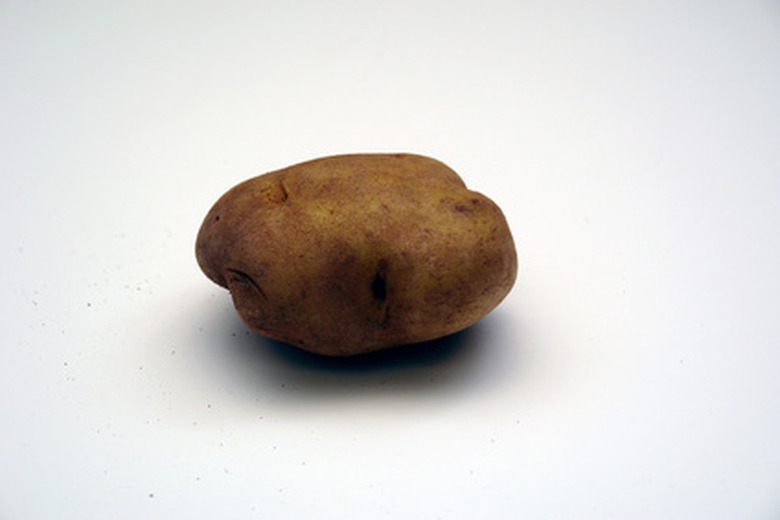How To Propagate Shrubs With A Potato
When propagating shrubs, the cuttings taken from the mother plant must be supplied with water and nutrients to begin growing a healthy root system that will be able to support the plant during its adult life. Potatoes will act as somewhat of an incubator, providing the fresh shrub cutting with moisture and nutrients until it grows a root system capable of collecting nutrients for itself. By using a potato in conjunction with a rooting hormone, you can successfully propagate your shrubs.
Step 1
Use a pencil or a Philips screwdriver to create holes, 1 to 4 inches deep, into one side of the potato. Make the holes deep enough to accommodate the shrub cuttings.
Step 2
Dip the ends of the shrub cuttings into a rooting hormone gel. The rooting hormone gel will promote the growth of new roots and will provide the cutting with nutrients until is begins to establish a healthy root system.
- When propagating shrubs, the cuttings taken from the mother plant must be supplied with water and nutrients to begin growing a healthy root system that will be able to support the plant during its adult life.
Step 3
Place the shrub cuttings into the holes in the potato–one cutting per hole.
Step 4
Fill a planting container large enough to accommodate the potato with potting soil.
Step 5
Bury the potato in the potting soil, leaving only the cuttings exposed out of the soil, but completely cover the potato.
Step 6
Water the potting soil until it is thoroughly damp to the touch, and place the planting container into a greenhouse or into an area where it will receive the heat of full sun conditions for the majority of the day.
Propagate Sweet Potato Plants With Vine Cuttings
Sweet potato (Ipomoea batatas), though technically a true sweet potato with an edible tuber, is also sometimes grown as an ornamental for its colorful foliage and trailing habit. Select parent sweet potato plants that are growing vigorously and appear healthy, with no symptoms of disease or nutrient deficiency. Prepare the site or rooting media and container for cuttings. Sweet potatoes prefer a fertile, well-drained soil, so incorporate several inches of an organic-material soil amendment like aged manure or well-rotted compost into the site to improve fertility and drainage, if needed. Poke a hole into the rooting media in the container with a pencil for each planned cutting, spacing holes far enough apart that leaves from different cuttings will not touch. To root the longer cuttings directly in the soil, bury the entire leafless portion of the vine horizontally under only an inch or two of soil, leaving just the leafy tip above the soil and firm soil around the buried cutting.
- Place the shrub cuttings into the holes in the potato–one cutting per hole.
- To root the longer cuttings directly in the soil, bury the entire leafless portion of the vine horizontally under only an inch or two of soil, leaving just the leafy tip above the soil and firm soil around the buried cutting.
Things Needed
- Shrub cutting(s)
- Healthy potato
- Pencil or Philips screwdriver
- Rooting hormone gel
- Planting container
- Potting soil
Tip
The potato can remain in the planting container forever. The potato will provide the plants with nutrients as it rots away. The potato may form sprouts in the planting container. Simply snip of the sprouts with sharp scissors or pruning shears to keep the potato from growing.
References
- Arizona State University: Ipomoea Batatas
- University of Massachusetts Amherst: Production Guidelines for Four Crops—Osteospermum, Angelonia, Calibrachoa & Ornamental Sweet Potato (Ipomoea batatas)
- Purdue University Cooperative Extension Service: The Sweet Potato
- North Dakota State University Extension Service: Questions on Sweet Potato
